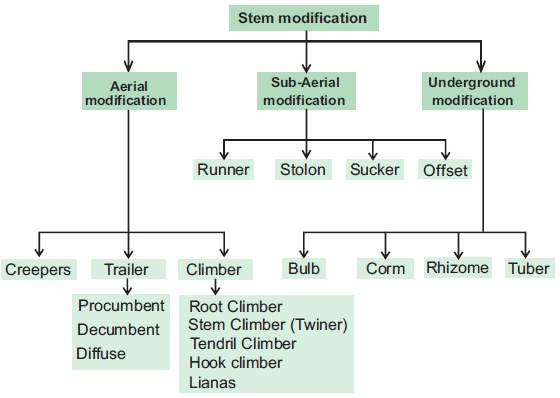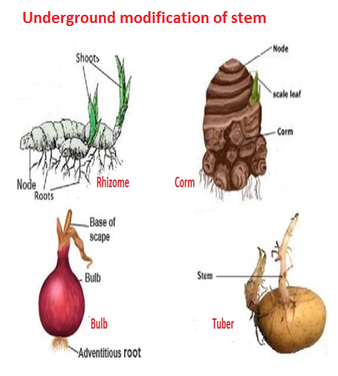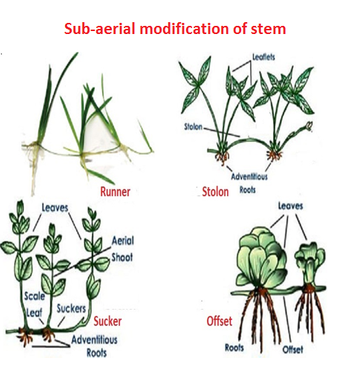The Stem
A stem is one of a vascular plant's main structural axes. It provides support for leaves, flowers, and fruits, distributes the water and dissolved chemicals between the roots and the shoots in the xylem and phloem, stores nutrients, and generates new living tissue. The stem is the section of the axis that ascends and bears branches, leaves, flowers, and fruits. It grows from the plumule of a sprouting seed's embryo. Nodes and internodes are found on the stem. Nodes are the parts of the stem where leaves are born, whereas internodes are the parts between two nodes. The stem produces buds that are either terminal or axillary. When young, the stem is usually green, but as it matures, it becomes woody and dark brown.
The stem's primary job is to spread out branches containing leaves, flowers, and fruits. Water, minerals, and photosynthates are all carried by it. Some stems have multiple functions, including food storage, support, protection, and vegetative propagation.
Modifications of a Stem: Stems havebeen altered to do various tasks. In potato, ginger, turmeric, zaminkand, and Colocasia, underground stems have been adapted to store food. They also serve as perennation organs, allowing them to survive in environments that are not conducive to growth. Stem tendrils, which emerge from axillary buds and are slender and spirally coiled, assist plants in climbing, such as cucumbers, pumpkins, and melons. Stem axillary buds can also be transformed into woody, straight, and pointed thorns.
Many plants, such as Citrus and Bougainvillea, have thorns. They keep animals from eating the plants. Arid-climate plants change their stems into flattened (Opuntia) or fleshy cylindrical (Euphorbia) forms.They have chlorophyll and are capable of photosynthesis.
Some plants, such as grass and strawberry, stretch underground stems to new niches, and new plants emerge as older sections die. A slender lateral branch emerges from the base of the main axis in plants like mint and jasmine, and after growing aerially for a time, arch downwards to touch the ground.
Aquatic plants like Pistia and Eichhornia have a lateral branch with short internodes and each node containing a rosette of leaves and a tuft of roots. The lateral branches of bananas, pineapples, and Chrysanthemums begin from the main stem's basal and underground portion, develop horizontally beneath the soil, and then emerge obliquely upward, giving rise to leafy shoots.




Figure 6(b): Stem modifications

 ACME SMART PUBLICATION
ACME SMART PUBLICATION
